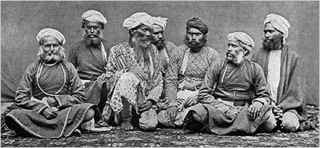
Thuggee are actions and crimes carried out by Thugs, historically, organised gangs of professional robbers and murderers in India. The English word thug traces its roots to the Hindi ठग, which means 'swindler' or 'deceiver'. Related words are the verb thugna, from the Sanskrit स्थग and स्थगति. This term, describing the murder and robbery of travellers, was popular in the northern parts of the Indian subcontinent, especially the northern and eastern regions of India.

Major-general Sir William Henry Sleeman KCB was a British soldier and administrator in British India. He is best known for his work from the 1830s in suppressing the organized criminal gangs known as Thuggee. He also discovered the holotype specimen of the sauropod dinosaur Titanosaurus indicus in Jabalpur in 1828.

Colonel Philip Meadows Taylor,, an administrator in British India and a novelist, made notable contributions to public knowledge of South India. Though largely self-taught, he was a polymath, working alternately as a judge, engineer, artist, and man of letters.
Thug Behram, also known as Buhram Jamedar and the King of the Thugs, was a leader of the Thuggee cult active in Awadh in central India during the late 18th and early 19th century, and is often cited as one of the world's most prolific serial killers. He may have been involved in up to 931 murders by strangulation between 1790 and 1840 performed with a ceremonial rumāl, a handkerchief-like cloth used by his cult as a garrote. Only 125 were confirmed.

Terence Fisher was a British film director best known for his work for Hammer Films.
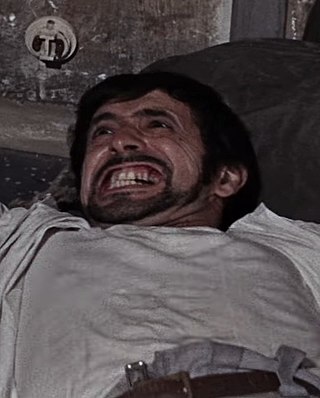
Tutte Lemkow was a Norwegian actor and dancer, who played mostly villainous roles in British television and films. His chief claims to mainstream familiarity were his roles as the fiddler in the film version of Fiddler on the Roof and the old man ("Imam") who translates the inscription on the headpiece of the Staff of Ra for Indiana Jones in Raiders of the Lost Ark.

The Deceivers is a 1952 novel by John Masters on the Thuggee movement in India during the period of British rule during the 19th-century. It was his second novel, following Nightrunners of Bengal.
Organised crime in India refers to organised crime elements originating in India and active in many parts of the world. The purpose of organised crime in India, as elsewhere in the world, is monetary gain. Its virulent form in modern times is due to several socio-economic and political factors and advances in science and technology. There is no firm data to indicate the number of organised criminal gangs operating in the country, their membership, their modus operandi, and the areas of their operations. Their structure and leadership patterns may not strictly fall in line with the classical Italian mafia.
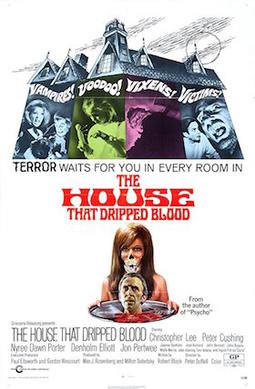
The House That Dripped Blood is a 1971 British anthology horror film directed by Peter Duffell and distributed by Amicus Productions. It stars Christopher Lee, Peter Cushing, Nyree Dawn Porter, Denholm Elliott, and Jon Pertwee. The film is a collection of four short stories concerning a series of inhabitants of the eponymous building. All of the stories were originally written, and subsequently scripted, by Robert Bloch.

Indra Sen Johar, better known as I. S. Johar, was an Indian actor, writer, producer and director, who excelled in comedic roles but is best known to international audiences for portraying Gasim in the epic film classic Lawrence of Arabia.

Guy Rolfe was a British actor.

Gunga Din is a 1939 American adventure film from RKO Radio Pictures directed by George Stevens and starring Cary Grant, Victor McLaglen, and Douglas Fairbanks Jr., loosely based on the 1890 poem of the same name by Rudyard Kipling combined with elements of his 1888 short story collection Soldiers Three. The film is about three British sergeants and Gunga Din, their native bhisti, who fight the Thuggee, an Indian murder cult, in colonial British India.
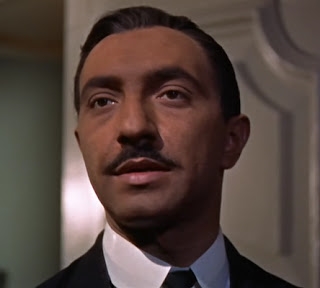
George Pastell was a Cypriot character actor in British films and television programmes. Sources vary as to whether his real name was Nino (IMDb) or George Pastellides (BFI). His marriage record gives his name as Georgiou Pastellides while his RADA record lists his name as George Pastel.

James Marne Kumar Maitland was an Anglo-Indian character actor in films and television programmes.
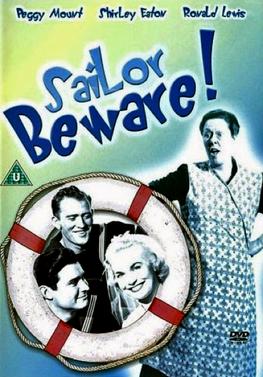
Sailor Beware! is a 1956 British comedy film directed by Gordon Parry and starring Peggy Mount, Shirley Eaton and Ronald Lewis. It was released in the United States by Distributors Corporation of America in 1957 as Panic in the Parlor.

The Deceivers is a 1988 adventure film directed by Nicholas Meyer, starring Pierce Brosnan, Shashi Kapoor and Saeed Jaffrey. The film is based on the 1952 John Masters novel of the same name regarding the murderous Thuggee of India.

The Brain, also known as Vengeance and Ein Toter sucht seinen Mörder, is a 1962 UK-West German co-production science fiction thriller film directed by Freddie Francis, and starring Anne Heywood and Peter van Eyck. It is adapted from the 1942 Curt Siodmak novel Donovan's Brain, and in this film, differing from earlier adaptations, the dead man seeks his murderer through hypnotic contact with the doctor keeping his brain alive.
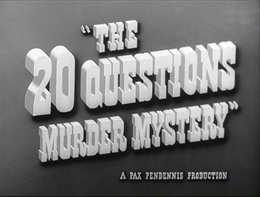
The Twenty Questions Murder Mystery, also known as Murder on the Air, is a 1950 British second feature comedy crime film directed by Paul L. Stein and starring Robert Beatty, Rona Anderson, and Clifford Evans. The film is a hybrid: the Twenty Questions sections take place in a studio recording of the BBC radio programme with the regular panellists and presenter. This is threaded into the plot as the clues trigger a series of murders, each linked to the clue.

The Pirates of Blood River is a 1962 British swashbuckler film directed by John Gilling and starring Kerwin Mathews, Glenn Corbett, Christopher Lee and Oliver Reed.

The Thuggee and Dacoity Suppression Acts, 1836–48 in British India under East India Company rule were a series of legal acts that outlawed thugee—a practice in North and Central India involving robbery and ritualized murder and mutilation on highways—and dacoity, a form of banditry prevalent in the same region, and prescribed punishment for the same.


















